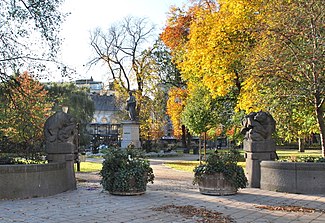| Berzelli Park | |
|---|---|
 Entrance to Berzelii Park | |
 | |
| Type | Urban park |
| Location | Norrmalm, Stockholm, Sweden |
| Status | Open all year |
Berzelii Park is a small park in central Stockholm, Sweden. The park is the location of the China Theater ( Chinateatern ), and the Berns salonger restaurant and theater.
